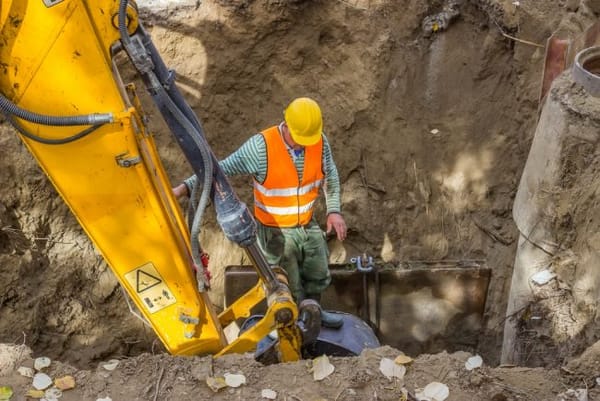Failure to manage trench work risks results in two fatalities
The Victorian County Court has reinforced, through a significant penalty, the importance of businesses operating in high-risk environments to ensure engineering controls are implemented when required. Last month, in DPP v Pipecon Pty Ltd (2021), civil construction company Pipecon Pty Ltd was fined $550,000 following the tragic death of two workers in 2018 in a collapsed trench.
Background
In February 2018, Pipecon started work at a site to construct a main trunk skewer system. The project included trenching, pipe-laying and manhole installation. It required Pipecon’s employees to work in and around excavated trenches and manhole pits.
On 21 March 2018, two workers – a 34-year-old man and a 21-year-old man – were laying pipes at a housing development in a trench when it collapsed. Both workers suffered fatal injuries. At the time of the incident, both workers were working unsupervised in a trench that had no manhole cage or trench shields.
Judgement
The Court considered that the supervisor must have been aware that high-risk work was being carried out, or was about to be carried out, without critical safety equipment of a manhole cage or a trench shield being in place. This was a serious breach of Pipecon’s safety systems, which exposed the workers to the danger of injury from engulfment.
The Court also found that a simple step that could have been taken was to provide supervision that would result in checking that the manhole cage or a trench shield had been taken to the area of the trench before work was commenced.
Pipecon pleaded guilty to breaching section 21 of the Occupational Health and Safety Act 2004 (Vic) and was fined $550,000, following a 25% reduction for entering a guilty plea.
Warning
Following the judgement, WorkSafe issued a press release to confirm that it would take similar enforcement action against employers that failed to take reasonable steps to protect the health and safety of their workers.
WorkSafe reminded businesses that to manage trench work risks, employers should:
- ensure a safe work method statement (SWMS) is developed and followed for trenches that are more than 1.5-metres deep, or for similar high-risk construction work;
- ensure workers are instructed on the SWMS and emergency response plans implemented to deal with incidents;
- plan work so that it can be undertaken safely, with, for example, appropriate engulfment protection systems and site security requirements;
- ensure work is supervised and monitored by a competent person who is experienced in trenching works; and
- ensure workers never work outside engulfment control measures where the excavation is of sufficient dimension or depth to allow a person to enter.
From the experts behind the Health & Safety Handbook, the Bulletin brings you the latest work health and safety news, legal updates, case law and practical advice straight to your inbox every week.

